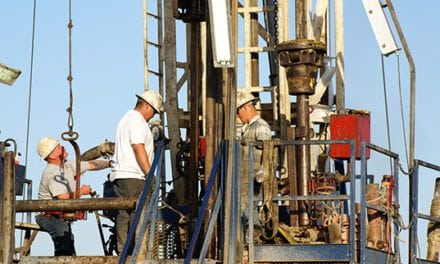Distillate Fuel Oil Nearing a Seasonal Low?
In this week’s edition.
- Natural gas prices have weakened because of high production and cooler weather.
- Commercial crude oil stocks fell four million barrels during the week ending July 18.
- Distillate fuel oil supplies are hugging the lows of the past five years of inventories.
- Natural gas owners could consider fixing the winter natural gas strip to protect inventories from falling value.
Sincerely, Alan Levine Chairman, Powerhouse Table covers crude oil and principal products. Other products, including residual fuel oil and “other oils” are not shown, and changes in the stocks of these products are reflected in “Total Petroleum Products.” Statistics Source: Energy Information Administration “Weekly Petroleum Status Report” available at www.eia.doe.gov
The Matrix
Mid-summer is typically a bullish turning point for energy prices, reflecting preparations for winter demand.
Natural gas prices have been weak. Last winter ended with a very tight supply situation and there was some concern that there would be problems in refilling storage. Natural gas production, however, has continued at high levels despite fewer rigs in action. Moreover, cooler weather this year has limited demand, especially for electricity generation.
We believe that natural gas prices will move lower before a bottom is found. At writing, natural gas futures are trading around $3.78. We think $3.50 might be seen in the next few weeks.
Petroleum products tell a different story.
Petroleum liquids futures have been trading in a range. The sideways action has brought option volatility down substantially. Market volatility is a key component to option pricing. Option premiums are at the lowest level seen for many years.
The futures curve is flat for distillate. There is a very small premium paid for the outer months. Powerhouse believes that winter diesel should be bought. Distillate inventories are very tight. The market cannot convincingly break support at $2.85 in the front month.
Gasoline is in backwardation. The outer months are trading at a discount to current prices. Gasoline is trading around $2.87 basis August futures now, only a few cents above support. RBOB is coming off the typical May/June high. The best time to be a buyer of gasoline is normally in November.
Supply/Demand Balances
Supply/demand data in the United States for the week ending July 18, 2014 were released by the Energy Information Administration.
Total commercial stocks of petroleum are still growing, adding 5.2 million barrels last week. Supplies now stand at 1.130 billion barrels of oil. Current supply is 10.0 million barrels more than last year.
Commercial crude oil stocks fell four million barrels during the report week. This continues a reduction that began in early May as refineries started to ramp up activity. At that time, crude oil stocks were at 397.6 million barrels. Stocks are still 20.9 million barrels higher than they were at the start of 2014, reflecting the remarkable expansion of domestic crude oil production.
Declines were seen in the Midwest (-2.0 million barrels) and on the West Coast (-1.3 million barrels). Stocks at Cushing, OK were down 1.5million barrels, moving to 18.8 million barrels. Stocks at Cushing are now at levels not seen since November, 2008. Stocks are still being drained in favor of the Gulf Coast where inventories fell less than one million barrels.
Crude oil imports were unchanged, averaging over 7.4 million barrels daily for the week. Imports are down 4.2 per cent from the same four-week period last year. U.S. crude oil production is almost 8.6 million barrels a day according to the latest report.
Refinery utilization rates were unchanged at 93.8 percent. Utilization was up on the East Coast. Midwest refineries could not sustain utilization at more than 100 per cent. Rates fell to 99.5 per cent.
The Department of Energy notes, “U.S. refineries have been processing record volumes of oil recently. Refinery inputs hit a record-high 16.8 million barrels per day in each of the past two weeks, exceeding the previous record from summer 2005. Refineries in the Midwest and Gulf Coast in particular pushed the total U.S. input volume upward, as these refiners’ access to lower-cost crude oil, expansions of refining capacity, and increases in both domestic demand and exports contributed to higher refinery runs.”
Crude oil inputs to refineries retreated from the prior week’s record setting 16.26 million barrels per day.
Gasoline production moved slightly higher, to 9.4 million barrels per day. Demand moved down to 8.8 million barrels per day. Demand continues to be very volatile this summer driving season. The 4 week average is just below 9 million barrels per day.
Gasoline added to stocks. Inventories moved up by 3.4 million barrels to 217.9 million barrels. Almost all of the increase occurred on the Gulf Coast (+2.4 million barrels.) West Coast stocks added nearly one million barrels to supply.
Distillate fuel oil supplies added 1.6 million barrels during the report week. The increases were distributed throughout the country. Supplies in the U.S. have nearly reached last year’s levels. Nonetheless, distillate stocks continue to hug the lows of the five year range of inventories. Distillate fuel oil demand moved higher to 3.9 million barrels daily. Refinery production of distillate fuels moved over 5.2 million barrels per day.
Propane inventories added another 2.2 million barrels in the U.S. Stocks are nearing the upper limit of the 5 year range. The gains in inventory are typical for this time of year. Propane stocks tend to top in October. Total stocks are 65.5 million barrels. Midwest stocks were up 1.4 million barrels. Inventories there are now above 21.6 million barrels.
Natural Gas
According to the EIA: Working natural gas in storage rose to 2,219 Bcf. The net injection reported for the week ending July 18 was 90 Bcf, 44 Bcf larger than the 5-year average net injection of 46 Bcf and 47 Bcf larger than last year’s net injection of 43 Bcf. Working gas inventories totaled 2,219 Bcf, 561 Bcf (20.2%) less than last year at this time, and 683 Bcf (23.5%) below the 5-year (2009-13) average.
Fifteen weeks remain until October 31 when the injection period traditionally ends. EIA puts the five year average underground storage of natural gas at the end of October at 3.851 Tcf. It requires weekly injections averaging 109 Bcf to reach that level.
Natural gas prices have been under pressure since mid-June. Substantial new production and fewer cooling degree days have combined to bring the winter (November 2014 through March 2015) futures strip to $4.00.
Looking forward, prices continue to flag. Natural gas, basis August, is last at $3.781. Its next important support level is around $3.38. The National Weather Service has been following a weather pattern that could result in a warmer than normal winter.
These factors suggest a continuation of the bearish pattern now in force.
Inventory owners could consider fixing the winter natural gas strip to protect inventories from further value erosion.
The costless collar, buying a put, selling a call could achieve this result. This establishes a floor and allows participation in rallies to the call strike.
Futures trading involves significant risk and is not suitable for everyone. Transactions in securities futures, commodity and index futures and options on future markets carry a high degree of risk. The amount of initial margin is small relative to the value of the futures contract, meaning that transactions are heavily “leveraged”. A relatively small market movement will have a proportionately larger impact on the funds you have deposited or will have to deposit: this may work against you as well as for you. You may sustain a total loss of initial margin funds and any additional funds deposited with the clearing firm to maintain your position. If the market moves against your position or margin levels are increased, you may be called upon to pay substantial additional funds on short notice to maintain your position. If you fail to comply with a request for additional funds within the time prescribed, your position may be liquidated at a loss and you will be liable for any resulting deficit. Past performance may not be indicative of future results. This is not an offer to invest in any investment program.Vol. PH 03 NO. 30Was this memo helpful? We’d like your feedback.
Please respond to [email protected]
Copyright © 2014 Powerhouse, All rights reserved.












